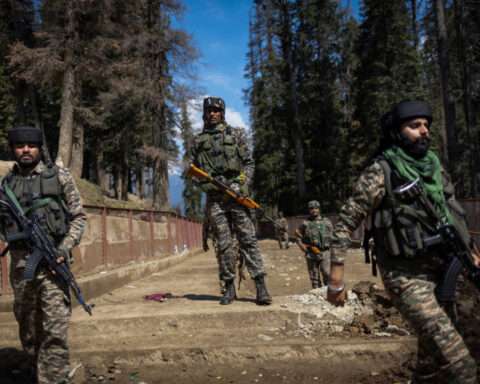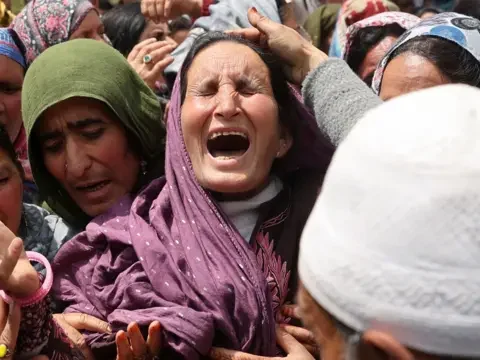Women, children and displaced populations have been hardest hit. This crisis – more so than other crises before – requires scalable solutions for the world’s poorest. For many countries, this presents unchartered territory.
Just over one decade ago, the world was beset by the triple threat of the Food, Fuel and Financial Crisis. Back then, scalable response options for the poorest looked quite different. To a large extent, national social safety net programs were just taking off across low income countries. Concerted efforts to build and restore human capital – i.e. the knowledge, skills and health that people need to realize their potential – were not the central part of recovery efforts. Cross-sector solutions remained a challenge. The evidence base on what works for the poorest lacking.
Fast forward ten years, and the world looks different in many respects. One area of innovation is the progress and potential for scaling up “big push” economic inclusion programs for the poorest. As highlighted in the recent State of Economic Inclusion Report (SEI) 2021 – Moving to Scale, there has been a dramatic push in recent years by governments across the world to promote resilience and opportunities for the world’s poorest – with increasing signs of evidence that these investments can be impactful and cost effective.
Published by the World Bank supported Partnership for Economic Inclusion (PEI), the report assesses experience in over 75 countries to show the potential of coordinated economic inclusion investments, and how this is shaped by COVID-19. Common interventions across economic inclusion programs include a combination of cash or in-kind transfers, skills training or coaching, access to finance, and linkages to market support.
As governments now seek scalable solutions for the poorest against the backdrop of COVID-19, three lessons come to the fore:
There are well evaluated programs to support the inclusion of the poorest in economic recovery
While transformative economic growth will be the ultimate driver of poverty reduction, it is not automatically inclusive and does not always penetrate the poorest households. In this context, economic inclusion programs have potential to address the needs of the extreme poor and vulnerable who have not – and may not – benefit from broader economic development. This is more urgent than ever as extreme poverty looks set to reach 700 million people.
Pre-COVID it was already clear that we are living in a time where labor markets remain largely informal and pathways to formal employment for the poorest were limited. COVID-19 is quickly eroding the few earning opportunities that existed, while intensifying the typical barriers for economic inclusion for the poorest i.e. access to markets and services, endowments and capital, social systems and political networks. For those facing extreme poverty, this is not a short-term crisis but one with potential to trap families in poverty for decades.
Evidence presented in the report shows how economic inclusion programs are now being customized to the poorest in a variety of contexts – ranging from Peru, to the Sahel, Bangladesh and India – to increase self-employment, microenterprise development and increasingly to modern wages. While country contexts vary significantly, a common goal is the degree to which economic inclusion programs can propel the poorest of households out of poverty, provide them opportunities to build their human capital, and subsequently utilize this human capital through productive employment and earning opportunities.
For example, Liberia’s Youth Opportunities Program focuses on scaling up income generation programs of youth through grants and business skills training support to small businesses, as well as support to rural youth to engage in communal farming. Cote d’Ivoire’s Productive Social Safety Net project is now scaling up economic inclusion packages to strengthen market linkages in partnership with local rural development agencies. Similar efforts are being replicated across the globe, with a strong emphasis on women’s economic empowerment, as demonstrated through a wide variety of programs spanning Argentina, Pakistan, Cambodia and Djibouti, to name only a few.
Social protection systems with “cash plus” interventions can support inclusion
As governments have scaled up economic inclusion, building on national programs and policy linked to safety nets; livelihoods and jobs; and financial inclusion the terms social safety nets–plus and cash-plus are gaining prominence. The “plus” indicates the potential to complement cash with additional inputs and service components or link to other sectors (agriculture, environment, financial services, and so forth). This social safety nets–plus agenda is especially seen across the Africa region, including Tanzania’s Productive Safety Net Program, Rwanda’s Minimum Package of Graduation Program and Malawi’s Community Savings and Investment Promotion Scheme (CoMSIP).
“Cash Plus” interventions are also showing promise to strengthen women’s economic empowerment. For example, in Zambia, the World Bank funds the Supporting Women’s Livelihood component of the Girls Education and Women’s Empowerment project, which builds on foundational social protection investments to provide 75,000 poor women with life and business skills training, mentorship, and support to form savings groups.
Inclusive recovery can be green
Living history reminds us that major shocks such as COVID-19, have the potential to fundamentally reshape economic inclusion programs at the country level. A “business as usual” recovery will not deliver growth that is robust, inclusive and sustainable. A lack of resilience will leave economies vulnerable to future shocks, with the specter of climate impacts and related problems increasingly to the fore.
Economic inclusion programs are well positioned to support a green, resilient, and inclusive economy. The report shows that 65% of World Bank economic inclusion programs seek to mitigate climate change and develop sustainable livelihoods, through sustainable natural resource management or climate change adaptation.
For example, in recent years the governments of Burkina Faso, Chad, Mali, Mauritania, Niger, and Senegal have introduced economic inclusion measures to tackle chronic poverty and food insecurity exacerbated by climate change. These measures can promote household resilience to the impacts of climate change by helping them to diversify their livelihoods, including into non-agricultural activities. As a result, households can cope better when climate shocks hit. Emerging evidence from Niger shows how these multidimensional responses can be scaled affordably. Similar experiences are evolving across a range of other countries including Ecuador, Panama, Comoros and Ethiopia.
An active learning agenda
On a final note, the SEI report reminds us of an ever changing and evolving development agenda and the need for continued innovation. Just over a decade ago, when governments sought urgent action to respond to the Financial, Fuel and Food Crisis, themes of human capital, economic inclusion and social protection were not central in policy dialogue. Evidence and approach have shifted significantly in the intervening period.
As we look towards the next decade – culminating in the Sustainable Development Goal Agenda – we need to mindful of the need for continuous learning and adaptation. The State of Economic Inclusion Report 2021 reminds us of a growing momentum and evidence to scale up economic inclusion efforts, around which human capital priorities for the poorest remain central.






